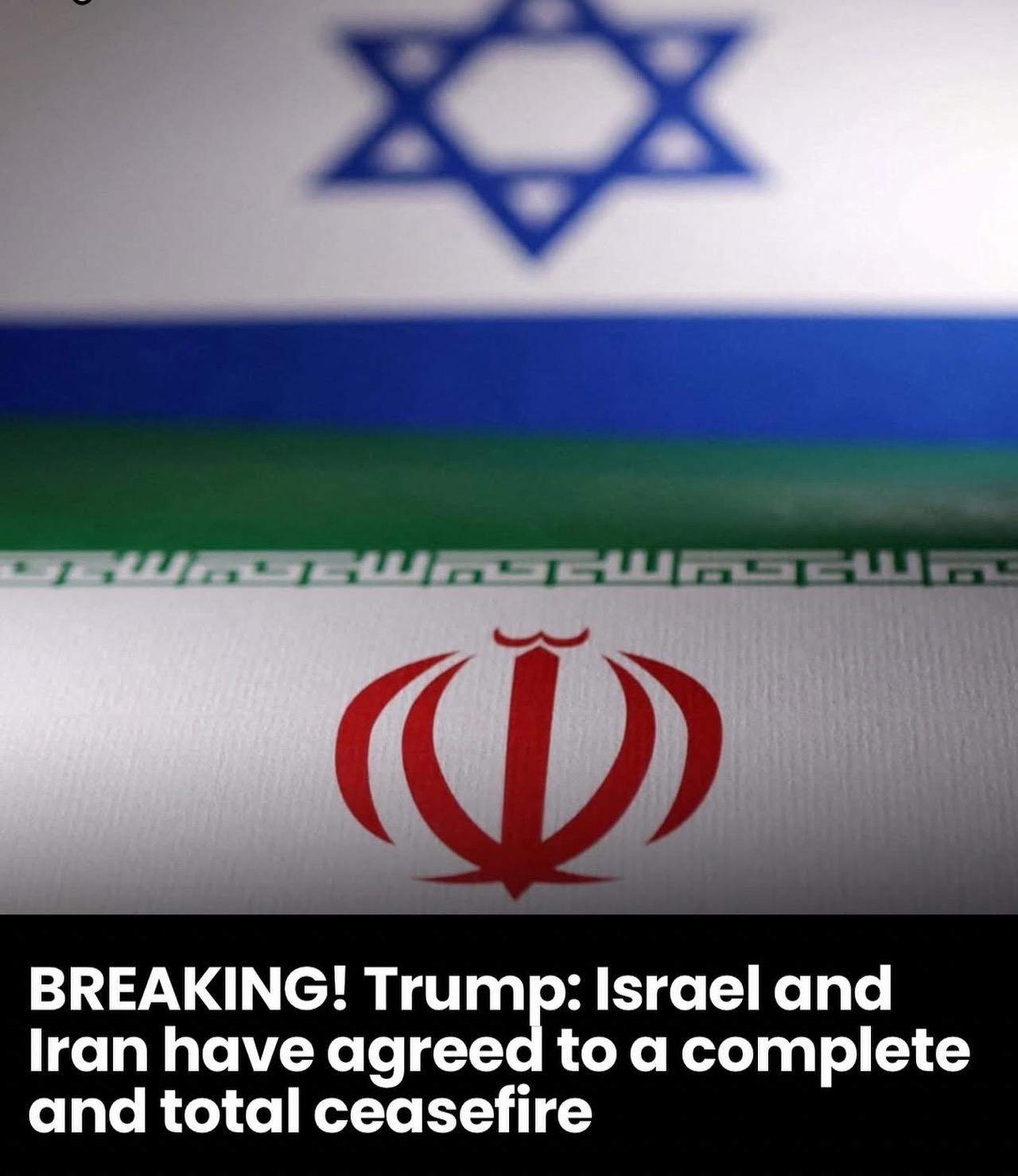June 23, 2025 — In a stunning development that could ease one of the most dangerous escalations in the Middle East in recent memory, Israel and Iran have agreed to a ceasefire following 12 intense days of military conflict. The truce, brokered through high-level mediation by the United States and Qatar, marks a tentative pause in hostilities that had threatened to spiral into a wider regional war.

What Triggered the Conflict?
The crisis began earlier this month when Israel launched a series of preemptive airstrikes targeting Iranian nuclear and military facilities, including sites in Fordow, Natanz, and Isfahan. The strikes were reportedly carried out with the support of U.S. intelligence, and prompted swift condemnation from Tehran.
In retaliation, Iran launched missile strikes on U.S. and allied military bases in the region — including an attack on the Al-Udeid Air Base in Qatar, a key U.S. facility. While no casualties were reported, the message was unmistakable: Iran would not sit quietly.
Over the next several days, the region saw a rapid uptick in military activity, cyberattacks, and tense diplomatic exchanges. Fears of an all-out war loomed.

How Was the Ceasefire Reached?
U.S. President Donald Trump (serving a second term after his 2024 re-election) played a central role in brokering the ceasefire. According to sources, Trump personally contacted leaders in Israel and Qatar — a key Iranian interlocutor — to push for de-escalation.
Qatar’s Prime Minister reportedly played a crucial role in securing Iran’s agreement to the terms. Once Israel signaled its willingness to halt operations, Qatar helped bring Iran to the table.
The agreement, announced late on June 23, outlines a phased ceasefire process:
- Step 1: Iran halts all offensive actions immediately.
- Step 2: 12 hours later, Israel reciprocates by ceasing its military operations.
- Step 3: Within 24 hours, the so-called “12-Day War” will officially end, provided both sides comply.
While neither Israel nor Iran has publicly confirmed the deal, U.S. officials insist both parties have agreed to the terms.

A Region Exhales — Cautiously
News of the ceasefire sparked cautious relief across the region and beyond. Oil markets reacted instantly: crude prices fell by more than $3 a barrel as investors priced in reduced geopolitical risk.
Australian Prime Minister Anthony Albanese welcomed the news during a press briefing, echoing the sentiments of European leaders who had called for restraint. “This ceasefire is an opportunity,” said Albanese, “but it must be followed by diplomacy, not silence.”
Still, concerns remain. While the ceasefire halts direct military conflict, it does not address deeper issues, such as Iran’s nuclear ambitions or Israel’s security concerns. Nor is it clear whether Iranian proxy groups like Hezbollah or Hamas are included in the agreement — a potential wild card that could derail the fragile peace.
Why This Moment Matters
This truce may be temporary, but it is significant. It marks one of the rare instances in recent years where direct hostilities between Israel and Iran escalated openly — and were halted without dragging other nations into prolonged conflict.
Experts point to this as a moment of “strategic pause,” giving all sides the chance to reassess, cool down, and possibly return to negotiations.
“The real question now,” said Dr. Leila Farhadi, a Middle East analyst based in London, “is not just whether the guns will stay silent, but whether diplomacy will speak louder going forward.”
What Happens Next?
- Verification: International observers and U.S. intelligence will closely monitor troop and missile movements over the next 24–48 hours to ensure compliance.
- Diplomacy: There is speculation that this ceasefire could open the door to renewed talks on Iran’s nuclear program, potentially involving European Union negotiators.
- Preparedness: Israeli Defense Forces (IDF) remain on high alert, and U.S. forces in the region are maintaining elevated readiness in case the truce breaks down.
Conclusion
The Israel–Iran ceasefire is a fragile but meaningful development in a volatile region. Whether it marks the beginning of a broader diplomatic breakthrough or just a temporary lull in hostilities remains to be seen.
For now, the world watches — hoping this truce is not the calm before a greater storm, but the first step toward lasting peace.



